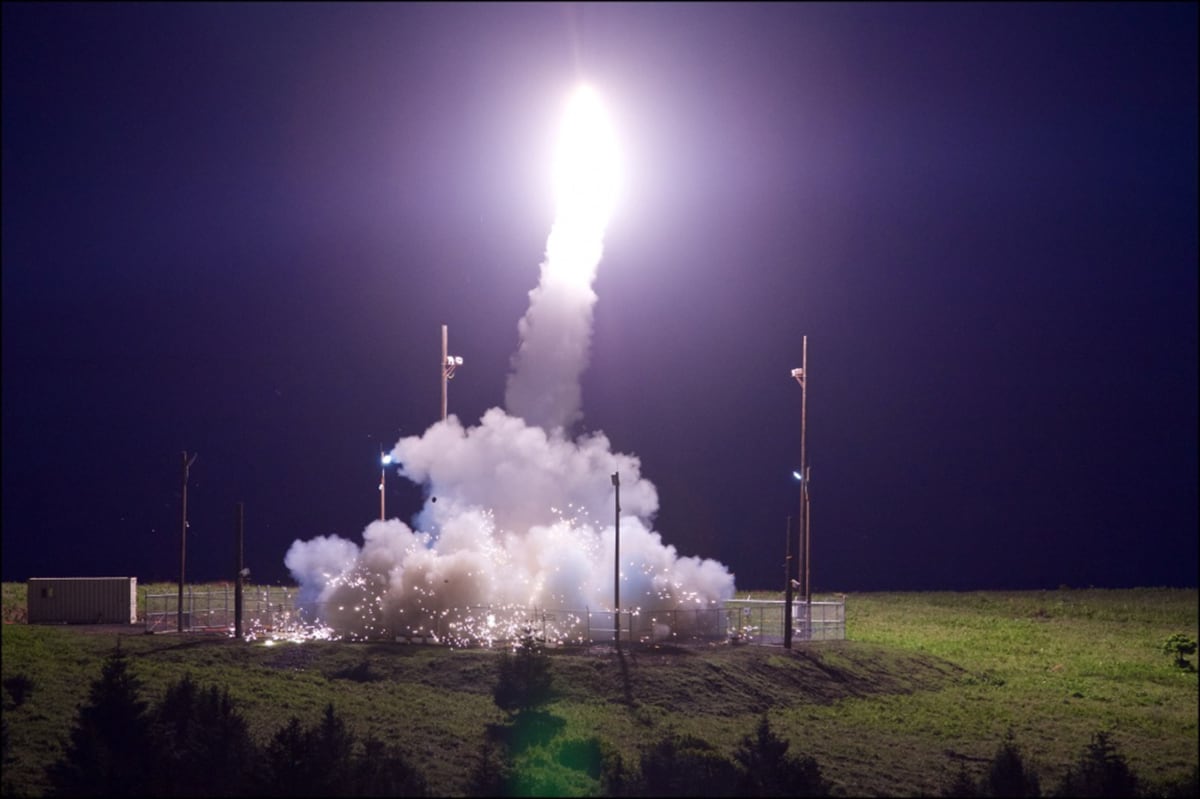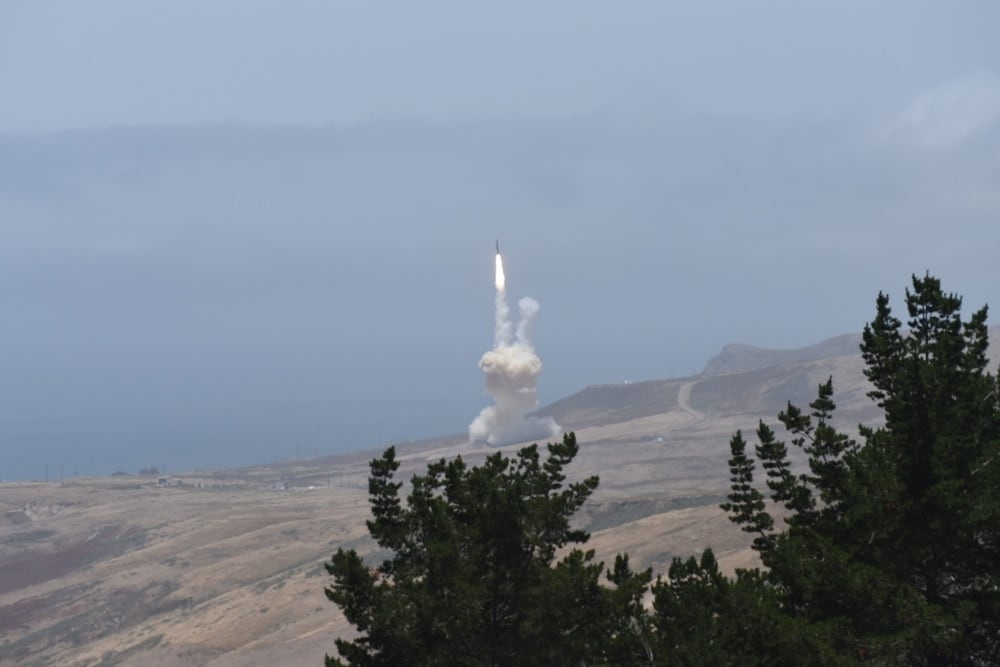WASHINGTON — The Pentagon has hit the pause button on a troubled effort to redesign the kill vehicle on the Ground-Based Midcourse Defense system’s interceptors after reporting a two-year delay in its development earlier this year.
The GMD system is designed to defend against possible ballistic missile attacks from North Korea and Iran.
Dr. Michael Griffin, the under secretary of defense for research and engineering, has decided to issue a stop-work order to Boeing on the development of the Redesigned Kill Vehicle — or RKV — which was first reported by Inside Defense last week.
Boeing was directed to stop work on the RKV on May 24, a company spokesman confirmed to Defense News.
RELATED

The RKV is meant to replace the current Exoatmospheric Kill Vehicles on all current and future GMD interceptors — a total of 64 ultimately. The EKV, designed to destroy targets in high-speed collisions after separating from a booster rocket, has struggled in testing but has performed reliably in major test events in recent years including a complex salvo test earlier this year.
There are 44 GBIs in place at Fort Greely, Alaska, and Vandenberg Air Force Base, California, with plans to add 22 additional missile silos at Fort Greely to support 20 more GBIs.
The RKV was due out for a critical design review in 2018 but that CDR was delayed by two years in the Missile Defense Agency’s fiscal year 2020 budget request released in March. The agency requested $412.4 million in FY20 to develop the RKV. The plan was to conduct the first controlled flight test of the RKV in FY22 with an intercept flight test in FY23 and a second test in 2024. As a result of the delay of the RKV CDR, the plan was to finish up the installation of the 20 new GBIs at Greely in 2025.
"We came through a preliminary design review as we approached the critical design review at the end of last year,” Rear Adm. Jon Hill, the MDA deputy director, said during a March Pentagon briefing. “We did not believe as a government team that we were ready to take that step into that critical design review, and so, through coordination in the department, all the way up to the undersecretary for research and engineering, we determined that the best thing to do was to go back and assess that design and take the time to do it right.”
Hill added, alluding to the previous struggles with the GMD exoatmospheric kill vehicle: “We could do what some programs do and what the Missile Defense Agency did years ago, which was to go ahead and produce what we’ve got and then deal with reliability issues within the fleet and then erode the confidence of the war fighter. We know that is the wrong step.”
The Pentagon "recently encountered a technical issue in Missile Defense Agency’s redesigned kill vehicle development program,” Heather Babb, Defense Department spokeswoman, told Defense News in a May 28 statement. “The RKV team has been assessing and testing as needed, suspect components.”
After receiving recent test results, Griffin, “has determined that the current plan is not viable and has initiated an analysis of alternative courses of action,” Babb said. “To avoid unnecessary expenditures, USD(R&E) has directed the Missile Defense Agency to issue a stop work on the RKV activity within the current Boeing contract until a viable path forward is identified."
The Pentagon did not say how long the analysis of alternatives might take to complete.
In the case of the current RKV program, Boeing was executing the MDA’s design plans.
“The government has indicated that they have initiated an analysis of alternative courses of action and we will support them in this effort as requested,” the company said in its statement. “Boeing will continue to support requirements for our customers and national decision makers set forth for effective missile defense, as we have for more than two decades.”
The Missile Defense Agency Director Gen. Samuel Greaves said, during a Senate Armed Services Committee missile defense hearing earlier this spring, that the issue was not contractor-related but a technical one, but he would not provide details because they are classified.
At the April hearing, MDA appeared to still be focused on proceeding with the RKV program with only the schedule in question. Greaves said the agency was testing components and the timeline for the program might be adjusted over the next few months. He said he believed once the component testing wrapped up the timeline could be shortened, but added, “it could go the other way.”
RELATED

It’s unclear what alternative paths might be assessed during the strategic pause, but some options could be tweaking the design for the RKV to get it back on track or MDA could look at an alternate path that isn’t just outfitting all present and future GBIs with the current EKV or jumping straight to the development of a Multi-Object Kill Vehicle (MOKV), but one that addresses taking out multiple targets — or volume kills — with one vehicle. The MOKV is to follow the RKV effort, but preliminary work on its development has been ongoing for several years.
And the Pentagon could use this as an opportunity to restructure contracts or recompete the entire GMD program, suggested Tom Karako, a missile defense analyst at the Center for Strategic and International Studies.
The decision could “represent an inflection point” for homeland missile defense in its entirety, Karako told Defense News.
It’s clear, he said, capability over and above the current kill vehicle is needed — the Defense Department has already spent a fair amount of money on the RKV program — but the Pentagon also has a chance to look at the overall balance of funding to address the North Korea threat and investments to deal with very different missile threats from Russia and China.
Jen Judson is an award-winning journalist covering land warfare for Defense News. She has also worked for Politico and Inside Defense. She holds a Master of Science degree in journalism from Boston University and a Bachelor of Arts degree from Kenyon College.






